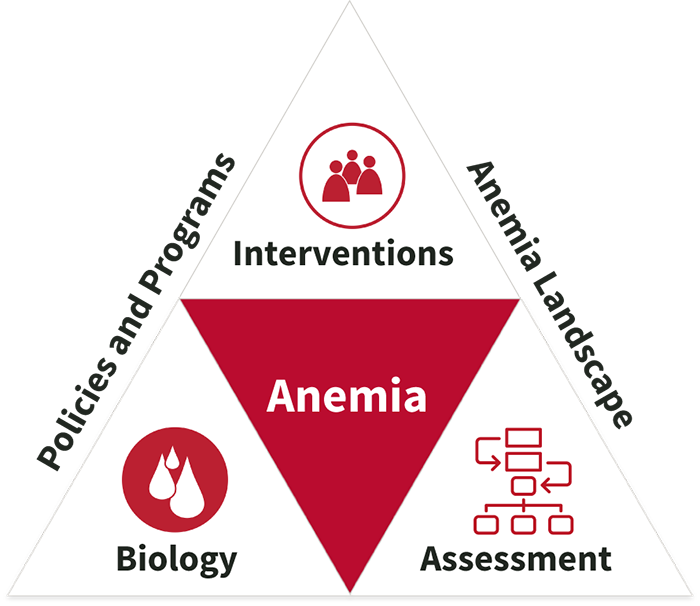Iron deficiency (ID) can result from insufficient iron intake, inadequate iron mobilization or absorption, or a combination of these.
The hepatic iron regulatory hormone hepcidin governs the amount and distribution of body iron by controlling the entry of iron into the circulation for delivery for red blood cell production and tissue use. When hepcidin is low, stored iron is released into the bloodstream. Hepcidin is suppressed when there is an increased need for iron from body stores to form new red blood cells or when the levels of iron or oxygen circulating in the blood are low. In contrast, hepcidin is increased and prevents stored iron from being released when infection or inflammation are present or when the levels of iron circulating in the blood are high.
Absolute iron deficiency develops when absent or reduced iron stores cannot meet iron needs for red blood cell production and tissue use. Absolute ID can result from insufficient iron intake, inadequate iron mobilization or absorption, blood loss, or from a combination of these. Functional iron deficiency develops when increased hepcidin levels prevent the release of iron from body stores and reduce iron absorption. Absolute and functional iron deficiency may coexist. Consequently, inadequate iron absorption can result from infection and inflammation, from gastrointestinal diseases, and from nutritional causes such as the composition of the diet. Diets with poor iron absorption include those that contain large amounts of food components that inhibit iron uptake (e.g., coffee and tea, and phytates from whole grains), low amounts of food components that enhance iron absorption (e.g., vitamin C, and meat), or both.
Understanding the causes of iron deficiency and anemia, including poor nutrition, chronic infections, and inflammation, and blood loss, will help diagnose, treat, and manage these conditions. As a leading cause of anemia and years lived with disability in low- and middle-income countries, addressing iron deficiency, both absolute and functional, is a public health priority.
We found 13 resource(s)



